How to Build a Workplace Orientation Program That Boosts Retention & Performance
Discover how a well-structured workplace orientation program can ease onboarding anxiety, improve engagement, and drive long-term employee success.
On this page
- What is orientation in the workplace?
- Why orientation programs are important for new hires?
- When should workplace orientation begin?
- How to design an effective employee orientation program?
- Which practices make your orientation program stand out?
- Empuls-enabled employee orientation workflow
- Sample Empuls orientation template: What it could include
- Conclusion
Remembering back to when you last accepted a job offer, you likely felt a bit of anxiety coupled with the excitement after landing a new role you’ve worked hard for. When the anticipation and newness wear off, it’s important that employees still enjoy the daily grind or, in other words, feel satisfied with the career path they have chosen.
Rather than hope they learn a lot during their first few weeks on the job, you must design an onboarding training program that sets employees up for success from the moment they begin working at your company or organization.
What is orientation in the workplace?
Workplace orientation is defined as how a new employee is introduced to their new job, responsibilities, work environment, and co-workers. It allows the new hire to get accustomed to their new team, department, and objectives at the organization.
Familiarizing employees with the company’s history, policies, and contribution to the industry can help employees feel like an important part of your organization.
Why orientation programs are important for new hires?
Wondering why orientation programs are important? It’s simple—new employees decide early on whether they feel they belong. A well-designed onboarding and orientation program helps them:
- Understand their role,
- Gain confidence in their responsibilities,
- Feel connected to the company mission,
- Begin contributing productively.
The importance of orientation is deeply tied to how it shapes employee performance and retention in those critical first weeks and months.
The early onboarding stage for new employees is the best time for employers to make an impression and set their expectations. Developing a well-thought-out workplace orientation program is worthwhile for proficiency, confidence, and retention in the first few weeks to months of employment.
The better the training program, the more likely new hires will feel acclimated to the job and company, which helps their performance and, in turn, impacts whether they find value in the job.
When should workplace orientation begin?
Orientation should begin as soon as the employee accepts the job offer. From sending a welcome message to the first day of training, early touchpoints set the tone for employee engagement.
Starting the process before the official first day can ease anxiety and give employees a smoother transition into the company.
How to design an effective employee orientation program?
When developing an orientation program, there are a few key considerations to keep in mind that will help with your deployment of the onboarding orientation program and how you can resonate with your new hires.
1. Learn from leaders in the industry
Whether you’re a new startup or a large corporation, it’s worthwhile to look towards companies leading the way to onboarding employee programs. If you are interested in developing your onboarding experience to retain the best talent, take a look at some of the top employee onboarding programs and what makes them unique.
For example, Buffer has developed a “three-buddy system” to help new employees feel comfortable and confident with their work, role, and culture from the moment they accept a job.
Whether it’s meeting the CEO of your company in the first week of orientation, a thoughtful welcome gift, or some company swag, creating a personalized approach to orientation can set your organization apart from others.
If you want the top talent working at your company, you’ll want to make sure that you stand out among your competitors. Creating a memorable and impactful onboarding experience will allow your new employees to feel part of the team early on and better understand what makes your organization a great place to work for.
2. Leverage onboarding software and technology
In this day and age, the human resources department (HR) is often overflowed with tasks and responsibilities to keep the company running smoothly.
By leveraging technology and taking advantage of affordable software solutions, companies can streamline their efforts to onboarding new hires, free up time for HR, and save all the paperwork effort.
Your company is unique, and so is your training—which is why it’s helpful to review some highly-rated employee onboarding software options to see what will help your company and your new hires the most.
From generating hiring forms and centralizing documents to tracking training progress, using modern technology in your onboarding can save your HR department from doing repetitive, tedious tasks that should be automated.
3. Begin with your training managers
As a business owner or leader, you probably won’t be involved in new employees' specific training and onboarding process.
With that said, your managers and training directors must understand your vision for the program and intend to create a positive experience for the new employees.
If those teaching and training don’t seem inspired to be at work, they will unlikely make a good first impression on new hires. Everyone learns and receives information differently, which is why training your managers and providing them with leadership skills is a key contributor to your onboarding process.
Give your current managers advice about bringing new employees up to speed. Please encourage them to incorporate visuals, examples, and interactive learning tools that will excite the new hires and engage them from the start. Remind those in charge of training to be patient and encourage questions.
Certain tasks or responsibilities that might seem simple to one person might overwhelm another. Being mindful of everyone’s background, education, and prior work experience can help your managers and training team teach new hires most effectively.
4. Cultivate culture and connection
Creating a strong company culture that represents your values begins with leadership. New employees will pick up on organization, internal communication, and reporting structure. That means your employees will give an impression to new hires about what they can expect.
Developing a company culture that you are proud of as a business leader is important if you want to hire great people who align with your standards.
Encourage and allow suggestions that might improve efficiency, communication, or simplify a process—support team members by hearing new ideas and recognizing a job well done.
Call out exceptional work and create a welcoming environment for creativity, positivity, and growth.
An adaptive yet organized approach can help your company navigate industry changes, economic fluctuations, and turbulence. With your employees’ trust and support, your organization will be able to adapt without falling apart in the process.
5. Explain benefits, retirement & insurance offerings
During the onboarding process, it’s good practice to provide your new employees with the company information surrounding benefits, retirement, and insurance options.
Doing this shows your dedication to your employees, families, and future. Also, taking the time to explain what you can offer them helps alleviate confusion later on.
Creating an easy-to-access company online portal with all this information is also recommended so employees can go back to review and apply at their convenience. Revisit your offerings to employees regularly to ensure that you provide the most popular workplace benefits that will keep employees satisfied at your company.
If you want to go above and beyond and show your commitment to your employees’ wellbeing, assist them in preparing for future financial stability and success.
Help educate them on the importance of contributing to their retirement as soon as possible to create the best opportunity for financial security in the future.
You can also inform them about the benefits of purchasing a life insurance policy to protect themselves and their loved ones. Doing so earlier in your career and life is often more affordable due to a lower risk of health complications.
It’s also helpful to protect family members who might not have the ability to take over your financial obligations should something unexpected happen to you. Taking time to outline these housekeeping materials will help your new employees feel valued and appreciated.
6. Highlight additional job perks
If you offer other company incentives, orientation is a great place to make your new employees aware of these additional perks. This might include things like client discounts, a gym membership, covered wellness visits, vacation time, child care assistance, and so on.
Anything extra that helps your employees or offers them additional ways to enjoy their lives is worth noting.
Fostering this type of care for your employees and exceeding expectations goes a long way in how they perceive the company and its leadership.
When you show your appreciation through additional programs and perks, your employees gain so much more than just a place to do a job—it becomes a team and community they feel connected to.
7. Offer continued education and learning opportunities
Another area in which you can offer some incentive and contribute to your employees’ future is through continuing education programs. Some employers offer to assist with paying for grad school or professional degree programs.
If this is not something your company does, you can still creative ways to learn on the job and expand their skill set. The more education you provide them with, the more valuable they will be to your company.
Setting up courses for extended learning or training down the road will benefit the company in the long term.
Which practices make your orientation program stand out?
The best orientation programs have a few things in common:
- A clear structure that eliminates confusion,
- Personalization to make each new hire feel seen,
- A blend of digital and in-person support,
- Ongoing touchpoints beyond the first week.
To stand out, infuse authenticity, purpose, and accessibility into your program. The purpose of employee orientation should always be to empower new hires with the confidence and clarity they need to succeed.
Empuls-enabled employee orientation workflow
Empuls offers a robust suite of tools that can elevate and automate each aspect of the employee orientation journey you described. Here's how Empuls aligns with and enhances your onboarding strategy:
1. Start early: preboarding & first impressions
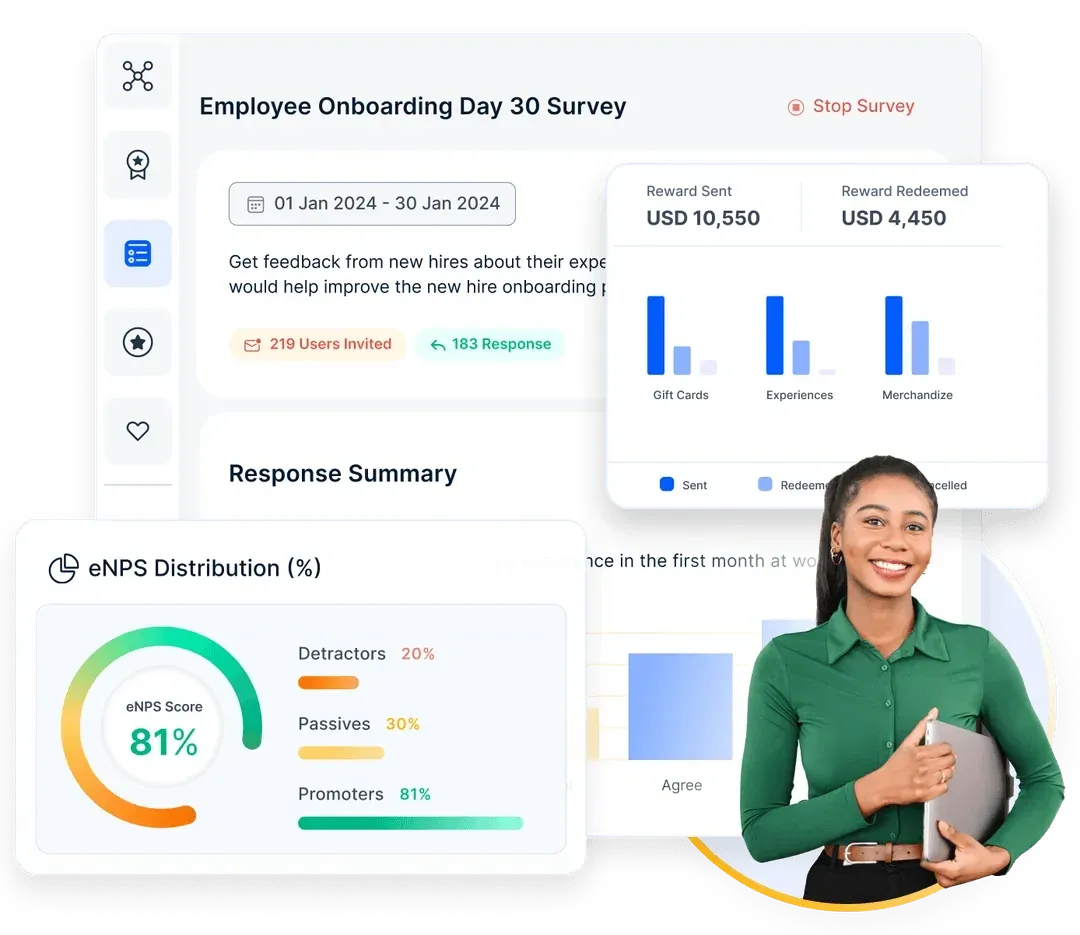
Empuls helps set the tone from day one with:
- Automated welcome messages via integrated communication tools (like MS Teams, Slack).
- Personalized nudges and AI-powered prompts to guide new hires through orientation steps.
- Social feed announcements to introduce new hires to the team, celebrate their arrival, and encourage welcoming messages.
2. Structured orientation via social intranet
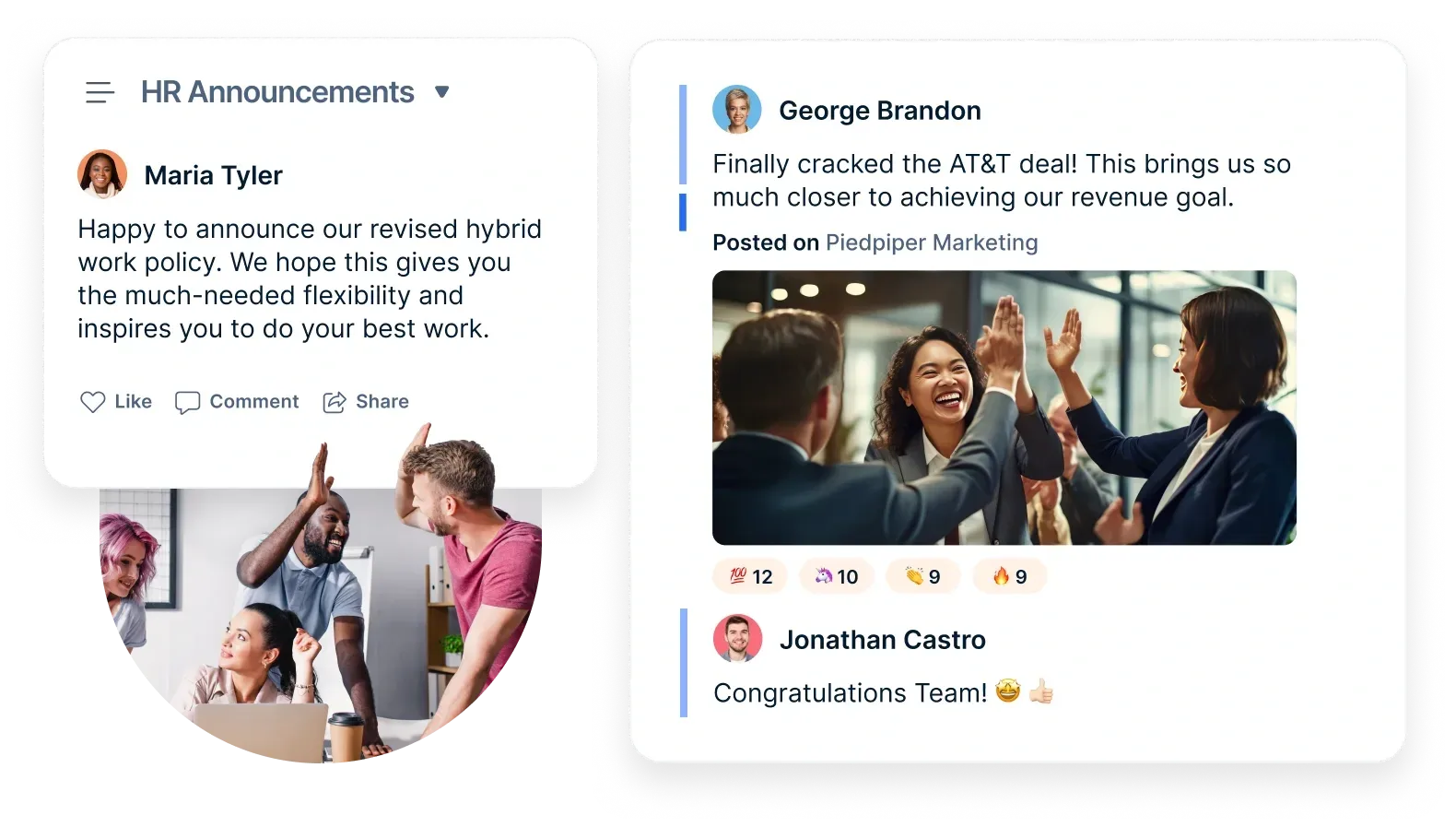
Empuls’ Social Intranet becomes your centralized hub for:
- Sharing company history, values, policies, and updates.
- Posting videos, documents, and quizzes to make content engaging.
- Driving two-way transparent communication to build early trust.
3. Training through community groups & AI nudges

- Create community or department-based groups for learning paths, knowledge banks, or buddy systems.
- Use Em, the AI assistant, to suggest learning resources and track progress.
- Equip managers with training nudges and recognition insights to keep onboarding interactive.
4. Cultural integration & peer connections
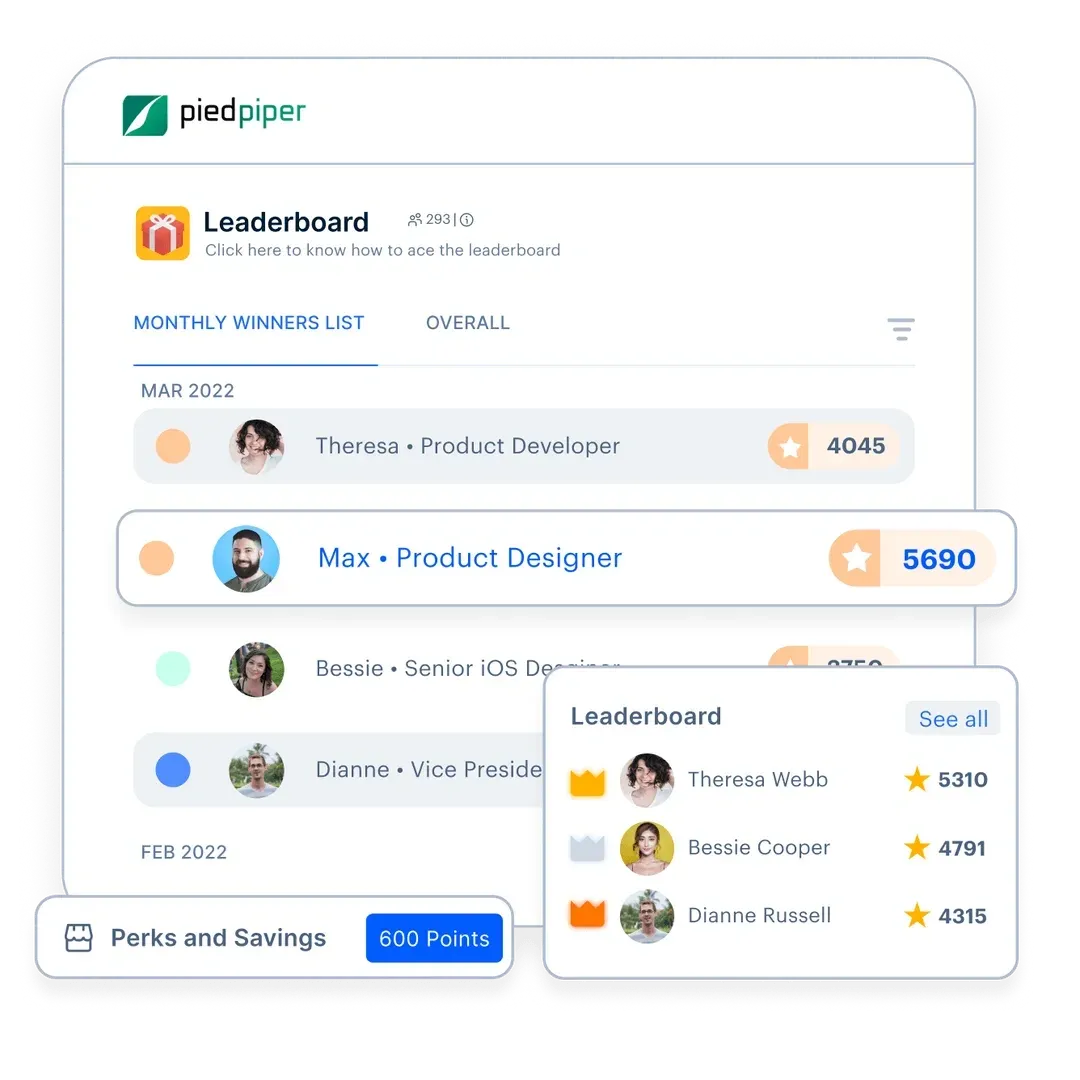
Empuls strengthens workplace culture via:
- Wishboards for birthdays, anniversaries, and achievements to encourage peer recognition.
- Townhall tools like “Ask Me Anything” and polls to increase visibility and transparency from leadership.
- Gamification elements (like points and leaderboards) that encourage early participation.
5. Benefits orientation made simple
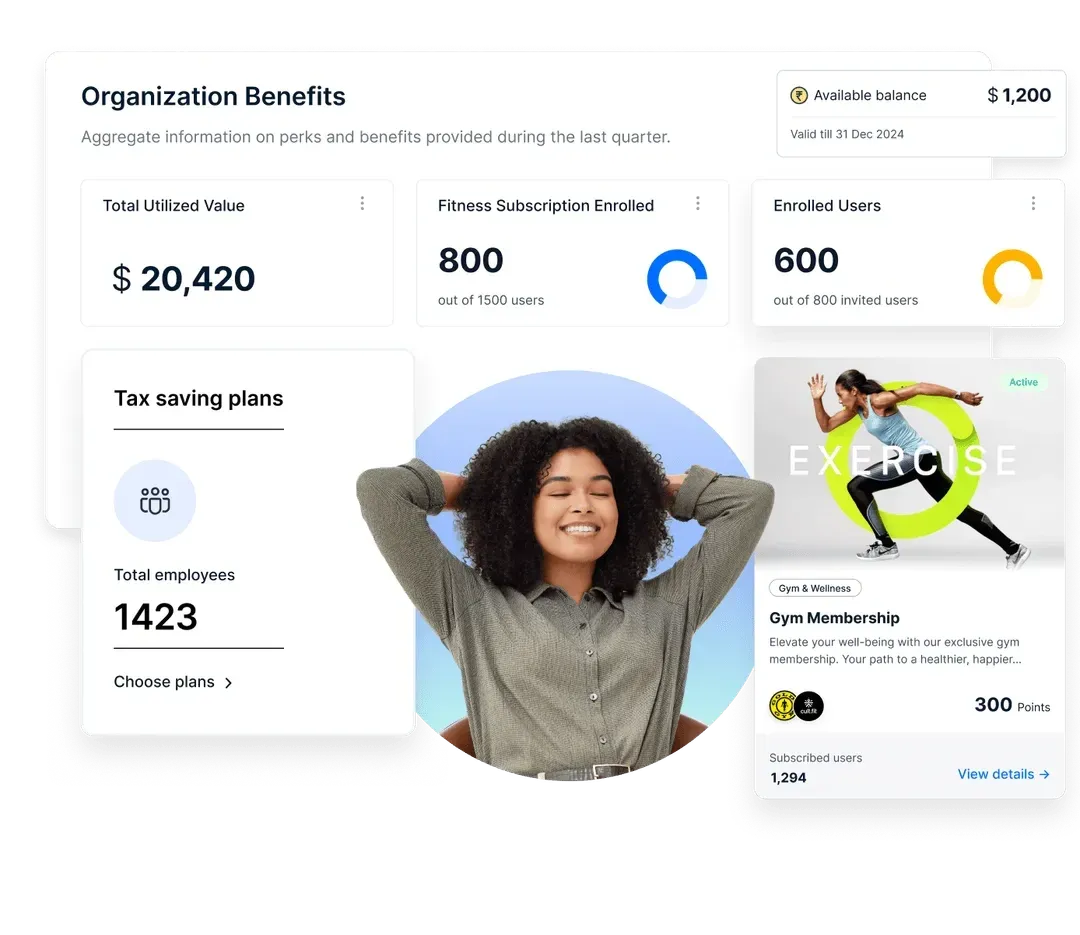
New employees can explore:
- A centralized perks hub with exclusive offers across 3000+ brands in 50+ countries.
- Flexible benefits and tax-saving allowances via Lifestyle Spending Accounts (LSAs) for meals, fuel, remote work, etc..
- Digital salary advances and financial wellness tools for emergency support.
6. Recognition from the start
Empuls ensures:
- Recognition for small and large milestones (e.g., completion of week 1, month 1) via automated awards.
- Welcome gifts or swag via Empuls’ integrated rewards marketplace including curated gift boxes, Amazon products, and branded merchandise.
7. Ongoing engagement & continuous learning
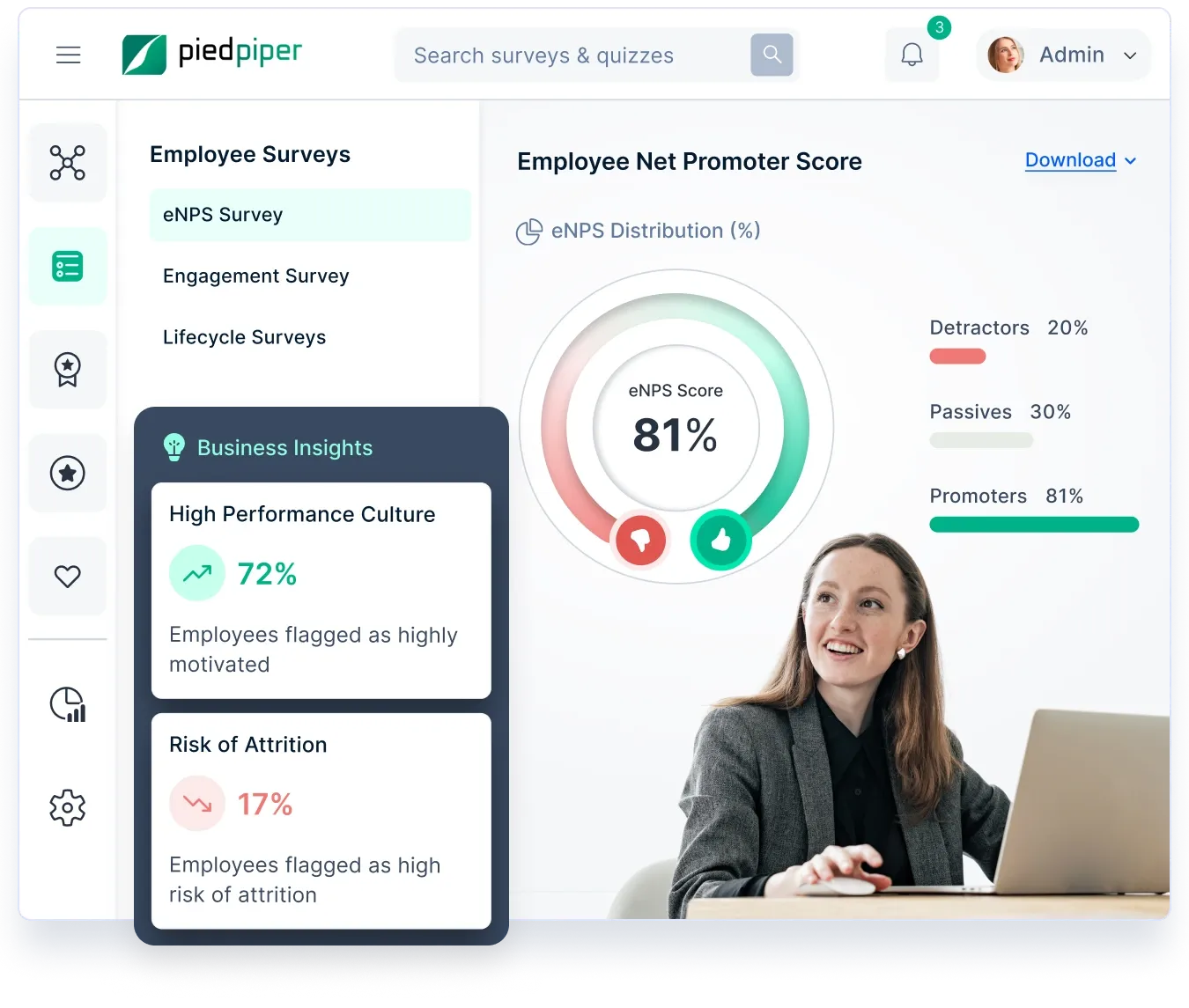
- Use Lifecycle Surveys to get feedback on onboarding experiences.
- Schedule check-ins at 30-, 60-, and 90-days using pulse surveys.
- Offer continued learning rewards for upskilling via custom rewards and badges.
Sample Empuls orientation template: What it could include
Following is a template you could follow for orientation in the workplace.
Phase | Content Delivered | Actions Triggered |
Pre-boarding | Welcome email + CEO video + culture deck | Social feed post + manager welcome nudge |
Day 1 | Org structure + intro to buddy + access to tools | “Say Hi” GIF feed + birthday/service tracker setup |
Week 1 | Team goals, key projects, core values | eNPS pulse survey + first shoutout reward |
Month 1 | LSA benefits, perks access, fringe benefit claim process | Performance review setup + hobby group nudge |
Ongoing | Access to community groups, peer learning hubs | Continuous learning rewards + feedback surveys |
Use Empuls to automate and schedule onboarding messages, surveys, nudges, and celebrations. Pull data from your HRMS (e.g., Workday, SAP, Zoho) to auto-trigger workflows.
Brand your entire onboarding journey visually with logos, custom colors, and content. Lastly, sends nudges, recommends engagement actions, and ensures no milestone is missed. Schedule a call now to get a customized solution that caters to your problem.
Conclusion
An effective workplace orientation program is more than just informing new employees about their duties and responsibilities. It’s your chance to sell them a promising future with unlimited growth potential. By dedicating time to creating a great workplace, you are setting your business up for success as you will have inspired employees interested in growing their careers with the company.


















